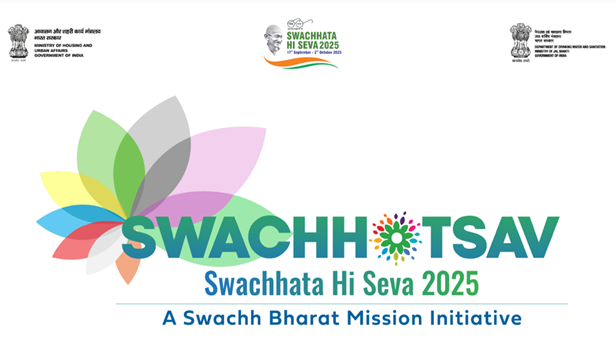Prime Minister Narendra Modi has described Swachh Bharat as “the world’s largest and most successful people-led, people-driven public movement of this century,” as the Swachhata Hi Seva 2025 campaign got underway with a renewed focus on waste management, citizen participation and last-mile inclusion.
Launched on October 2, 2014, the Swachh Bharat Mission (SBM) has seen the construction of over 12 crore toilets, significantly reducing open defecation and improving public health and dignity, especially for women and children. Officials estimate that nearly three lakh children under five have been saved from sanitation-related diseases since the launch of the mission.
This year’s campaign, themed Swachhotsav, is being held from September 17 to October 2 with the nationwide voluntary drive “Ek Din, Ek Ghanta, Ek Saath” on September 25 drawing participation from citizens, youth groups, NGOs, sanitation workers, political leaders and government organisations. Health camps and welfare activities have also been organised for Safai Mitras, the backbone of the cleanliness drive.
Waste management has become the central pillar of the mission. Daily processing of municipal solid waste has risen from 16 per cent in 2014 to over 81 per cent of the 1.59 lakh tonnes generated. Of the 2,492 lakh tonnes of accumulated legacy waste in the country, 1,437 lakh tonnes (58 per cent) have been remediated, reclaiming more than 7,600 acres of land. Out of 2,476 dumpsites identified nationwide, 1,041 have been cleared while work is underway at another 1,020.
Several cities are showcasing landfill transformations. In Delhi, 25 acres of the Bhalswa site have been remediated, with bamboo plantations and sanitation facilities taking shape. Rajkot has converted a 16 lakh-tonne dumpsite into a 20-acre urban forest, while Agra has turned its massive Kuberpur dumpsite into an Integrated Waste Management City with greenery, recycling plants and plastic-to-pipe units for farmers.
The Amarnath Yatra this year was conducted as a model zero-landfill pilgrimage with 1,600 mobile toilets, 65 waste-collection vehicles, and elimination of single-use plastics in langars. In Assam’s Morigaon, women have turned invasive water hyacinth into handicrafts, while entrepreneurs in Guwahati are producing biodegradable paper from the same plant, offering sustainable livelihood options.
Various ministries are reinforcing the campaign with on-ground initiatives. Commerce and Industry organised drives across SEZs, Agriculture launched health camps and outreach for sanitation workers, Cooperation linked cleanliness with plantation drives, while Ports and Shipping mobilised coastal clean-ups across the country.
In 2024, more than 8 lakh Cleanliness Target Units — neglected garbage dumps and dark spots — were transformed into usable public spaces. The 2025 campaign builds on that momentum, with officials underlining that the focus is shifting from short-term cleanliness drives to a long-term culture of cleanliness, sustainability and dignity.










